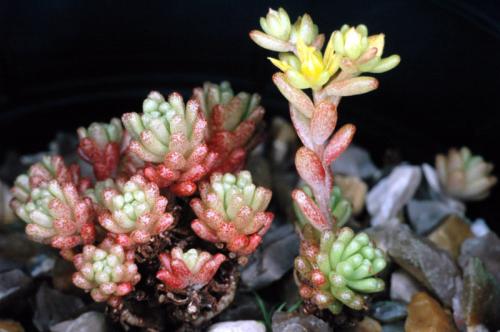ALPESTRE Villars, 1779
Synonyms :
Sedum pseudo-atratum Schur (s.a.)
Sedum rubens Mattuschka & Haenke (1778)
Sedum saxatile Allioni (1785)
Sedum guettardii Balbis (1804)
Sedum repens Schleicher ex DC (1815)
Sedum scheuchzeri Schleicher (1823)
Sedum erythraeum Grisebach(1843)
Distribution : Mountains of central and southern Europe and northern Anatolia, from the Vosges and the Carpathians to the Pyrenees, Sardinia, Macedonia and Greece; rocky places and rock fissures, 1500 - 3000 m, usually calcifuge.
Description (by 't Hart & Bleij in IHSP, 2003) :
Glabrous tufted perennial herbs with numerous ascending, creeping and rooting non-flowering shoots.
Leaves alternate, imbricate, sessile, very shortly spurred, oblong to elliptic-oblanceolate, 4 - 6 mm, obtuse, somewhat flattened, bright green often streaked with red.
Inflorescences : Flowering branches ascending, usually simple, 5 - 8 cm, inflorescences few-flowered cymes usually with 2 branches, bracts 2 per flower.
FIowers 5-merous, sessile, sepals broadly sessile, unequal, oblong, to 4 mm, obtuse, petals free, oblong, 3,5 - 4 mm, subacute, dull yellow sometimes flushed red or reddish, filaments yellow, anthers small, yellow.
Cytology: 2n=16.
S. alpestre belongs to the comparium of Ser. Alpestria A. Berger ('t Hart 1991).
Ray Stephenson (Sedum, Cultivated Stonecrops, 1994, pp 96 - 97) :
Sedum alpestre is a very uncommon true alpine that is difficult to perpetuate in cultivation. It is a low-growing perennial with pale yellow or green-yellow flowers, often streaked with red, on compact inflorescences.
Habitat : Very disjunct colonies in the alpine zones of central and southern Europe are the home of this species—from thé Pyrenees to the Carpathian Mountains always above 1500 m (4900 ft).
Main points of distinction : Tiny, oblong, tightly packed leaves are usually green flushed with red (Leaf shapes, fig. 1d). Inflorescences carry only a few flowers, each having blunt, wide petals with wavy edges, and red carpels with tiny beaks. Very short stamens and sepals nearly as long as petals are useful identification points. Plants look similar to Sedum atratum, which has white flowers and no sterile shoots so is always annual.
Sedum annuum could also be easily confused with S. alpestre, especially if it perenniates, which it sometimes does. Sedum annuum has distinctly lanceolate petals with very acute tips and is a much more open plant than S. alpestre. In addition, the perenniating forms of S. annuum have more-linear, pea-green leaves with distinct apices.
Variation : Variability in leaf color from pure green to almost completely flushed red is to be expected. Leaves can also vary greatly in size; in a very exposed situation, they can be tiny, but in a shady spot they are often more than 1 cm (0,4 in) long, 't Hart (1978) says that only the chromosome number 2n = 16 occurs.
Horticulture : This species is a real challenge to a lowlander, for hot summer sun kills the plant. Often plants pull themselves down under gravel in baking conditions to emerge in autumn when temperatures moderate. A windy, semi-shaded spot is recommended, or a north-facing bank. Sedum alpestre is said to be a calcifuge, but experiments growing identical clones, one in a pot topped with quartz, the other with limestone chippings, showed no apparent differences in growth. It is an early flowerer for this group, usually flowering before the longest day of the year.
Pirin Mountains, Bulgaria, 1900 m :
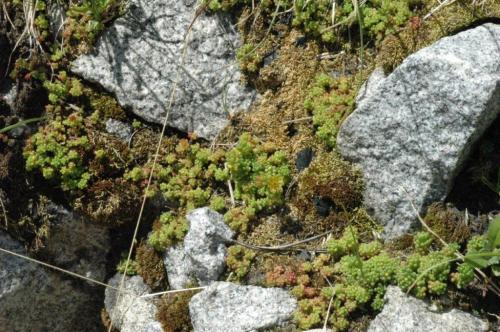
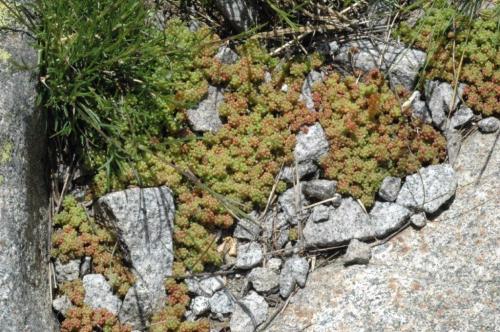
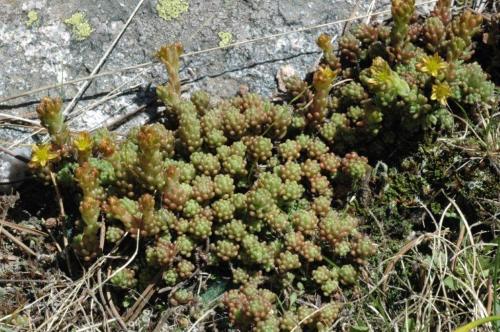
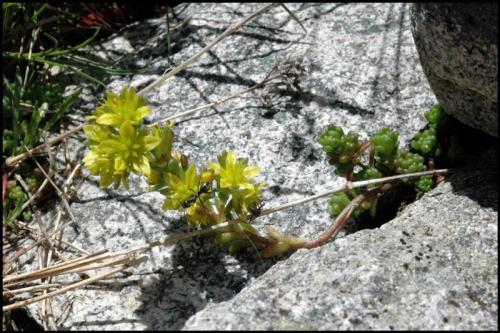
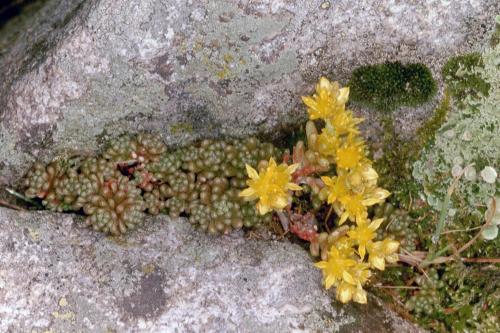
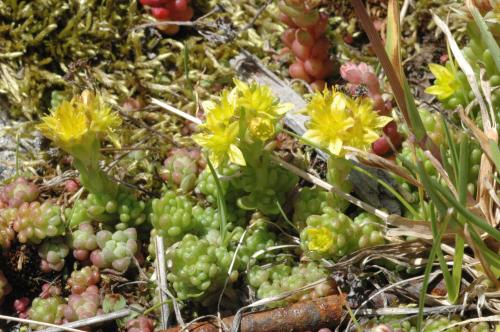
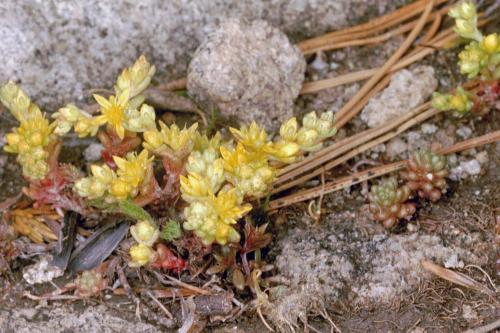
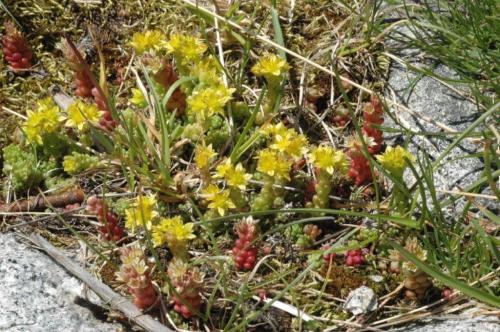
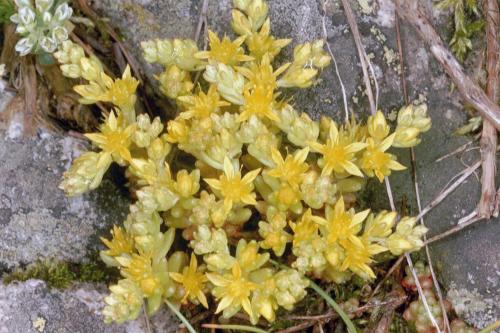
A small % of plants in the Pirin Mountains have copper coloured flowers :
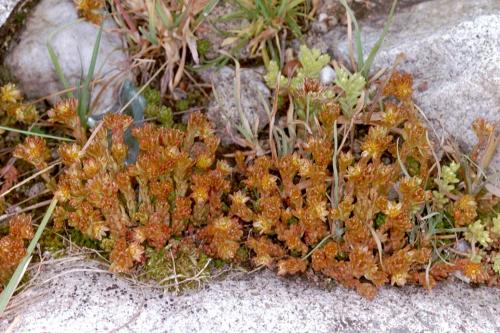
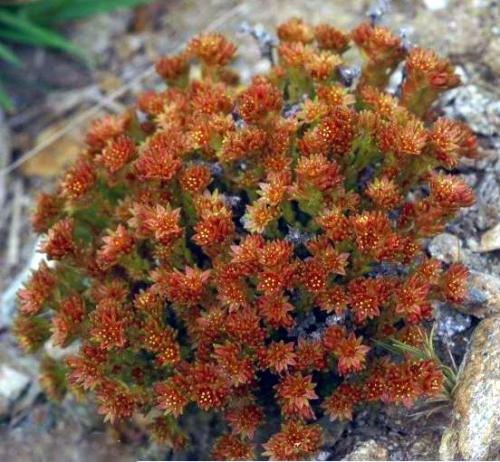
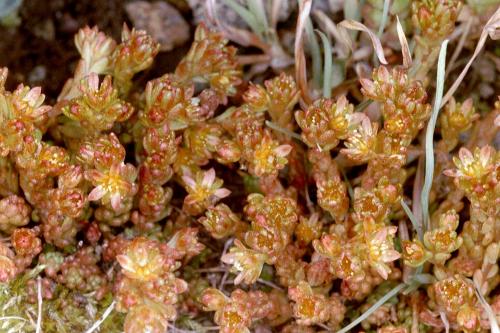
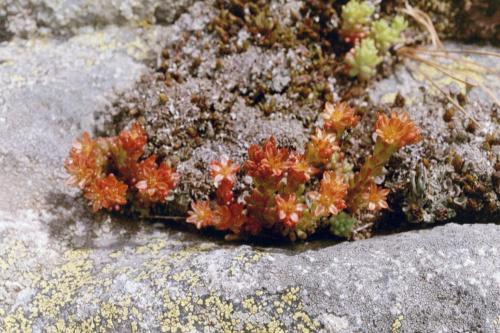
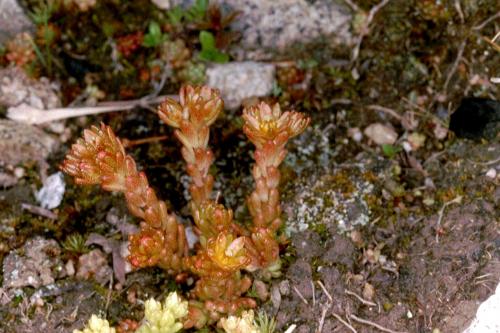
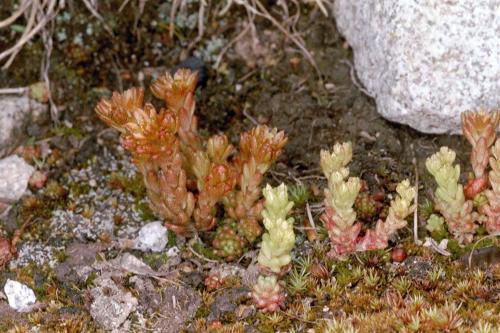
Rhodope Mountains :
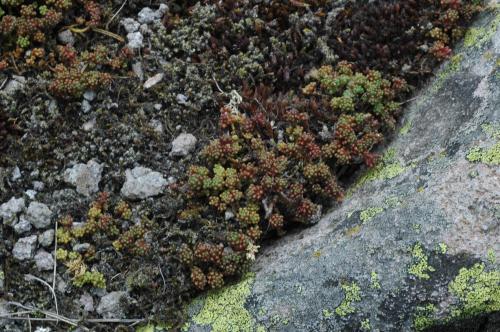
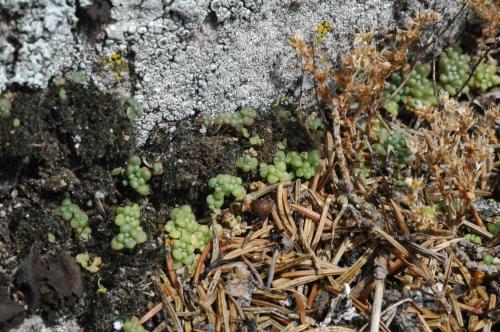
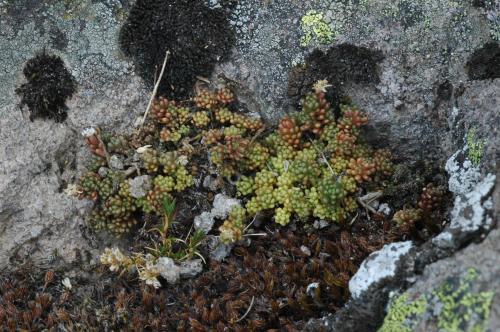
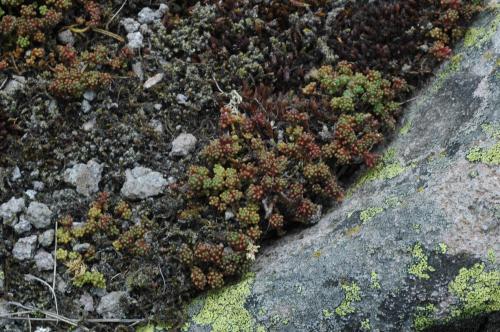
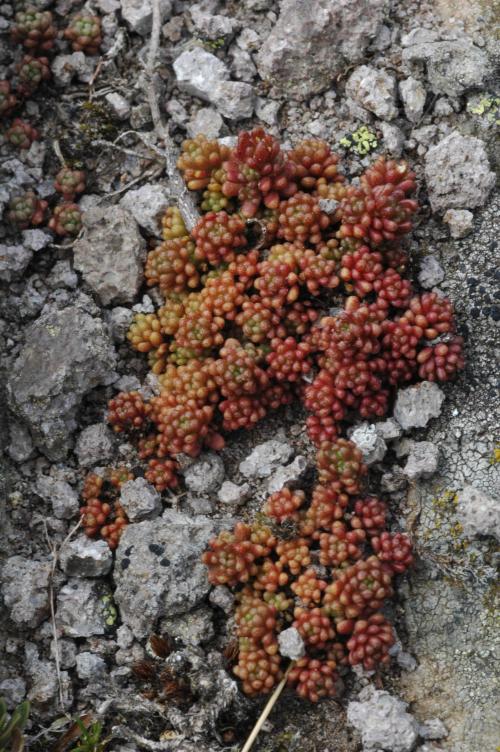
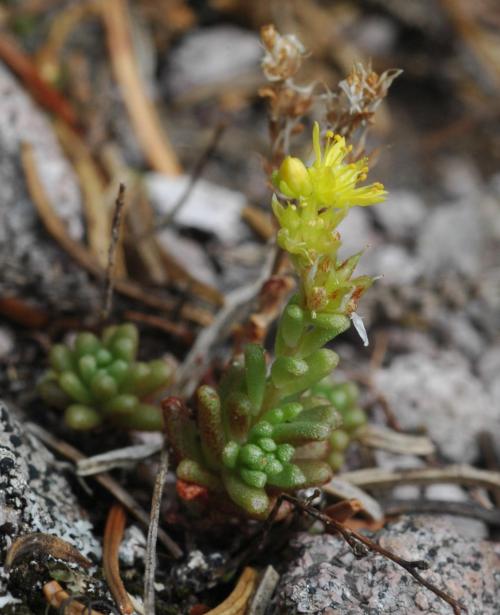
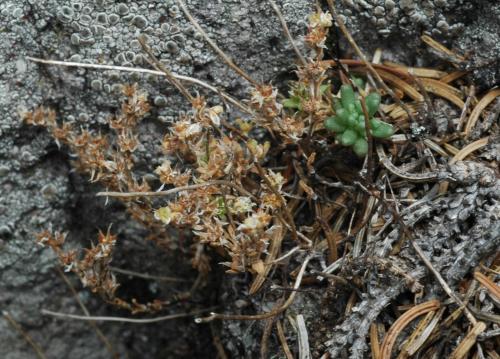
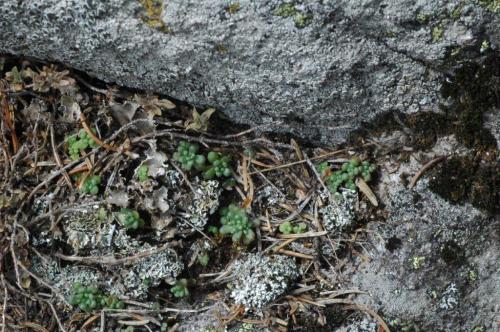
North Macedonia :
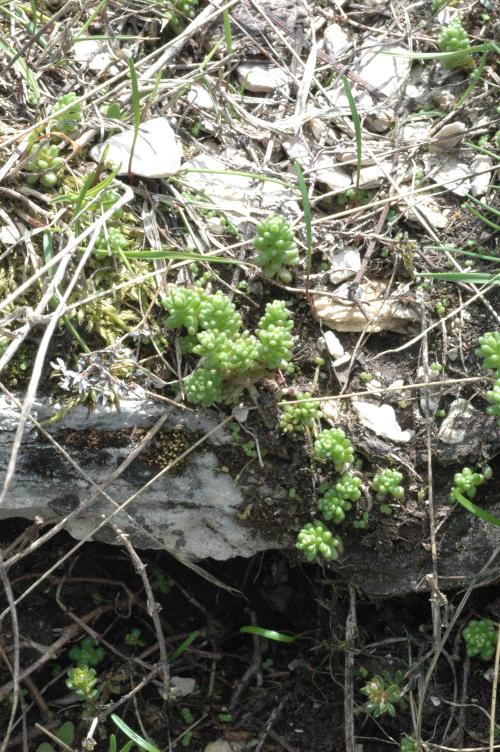
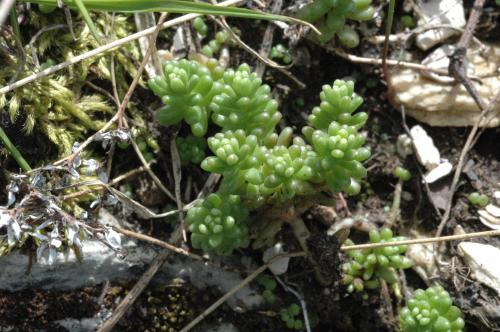
Italy : Lombardia :
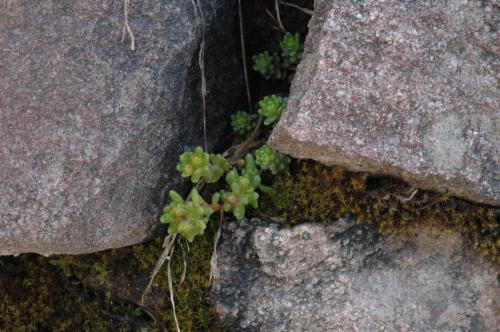
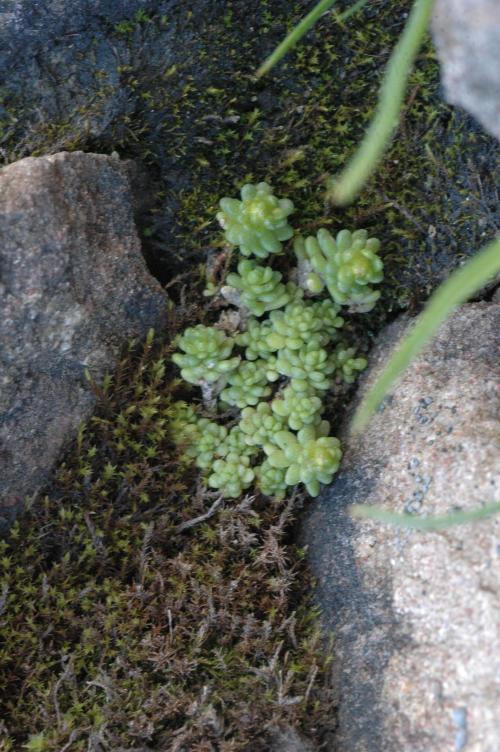
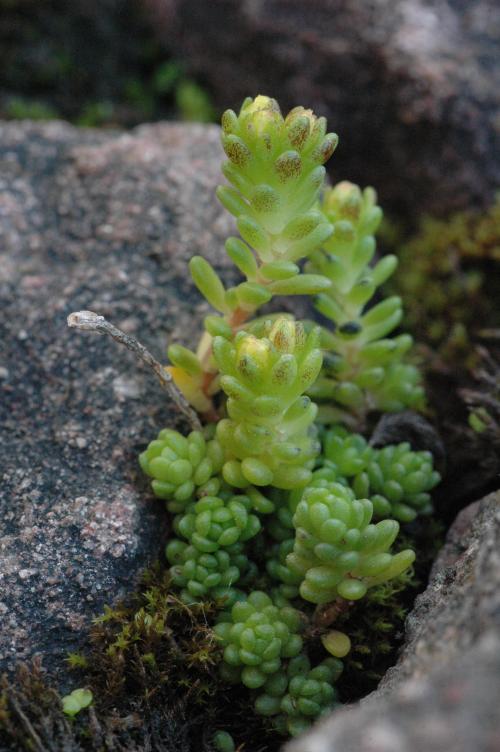
France :
Lac d'Allos :
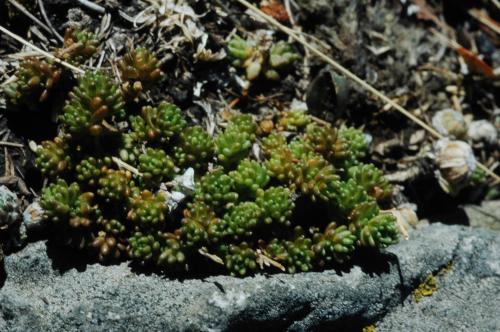
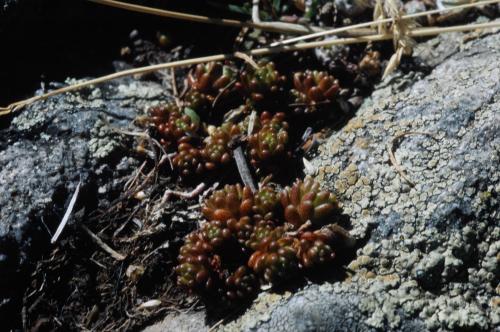
Corsica :
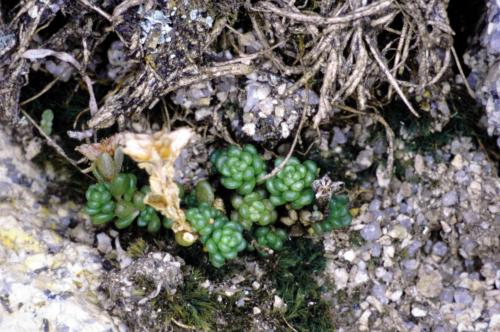
Plant in cultivation :
